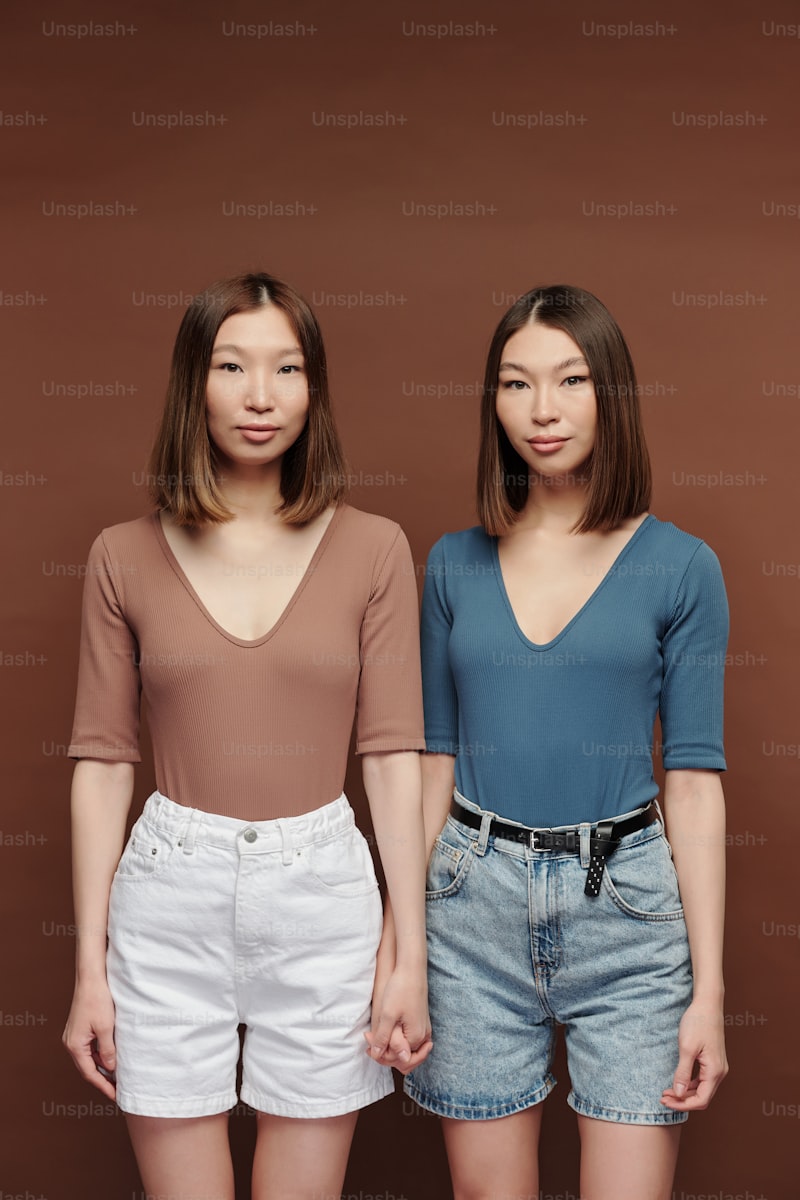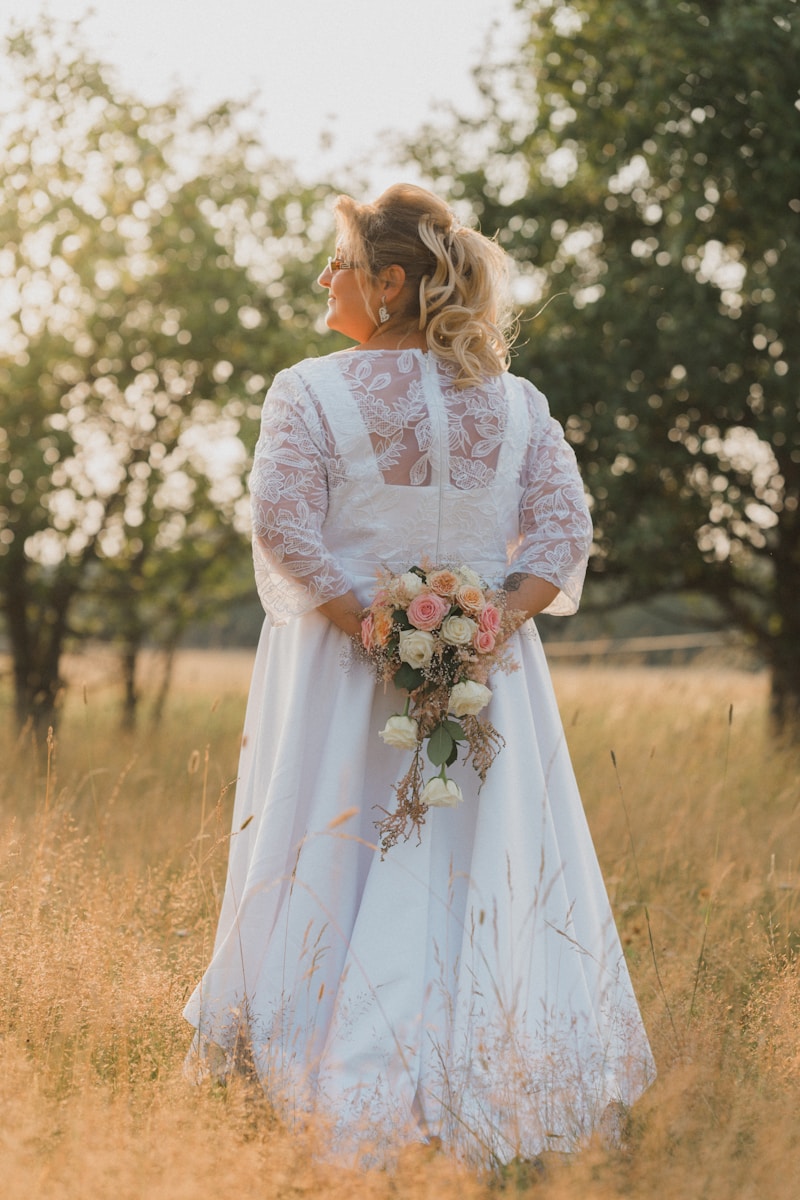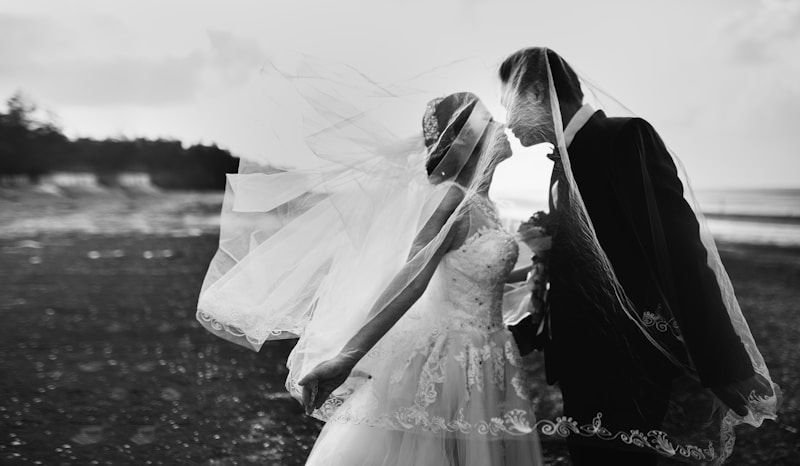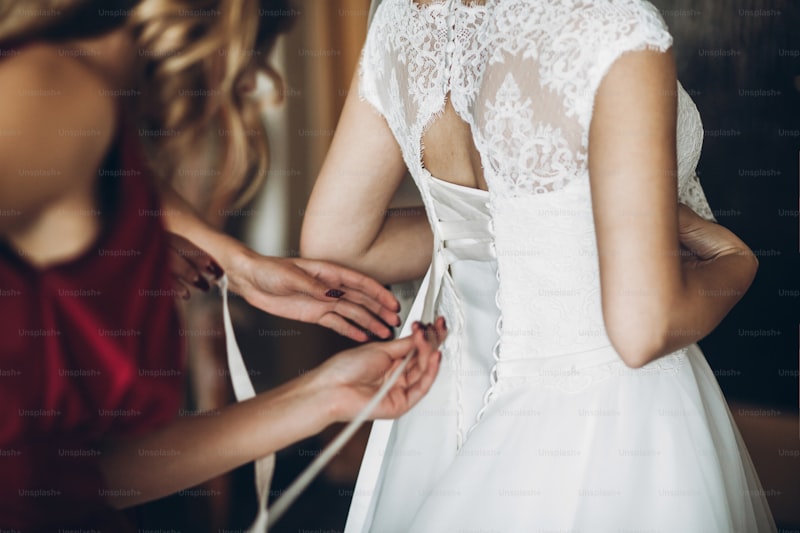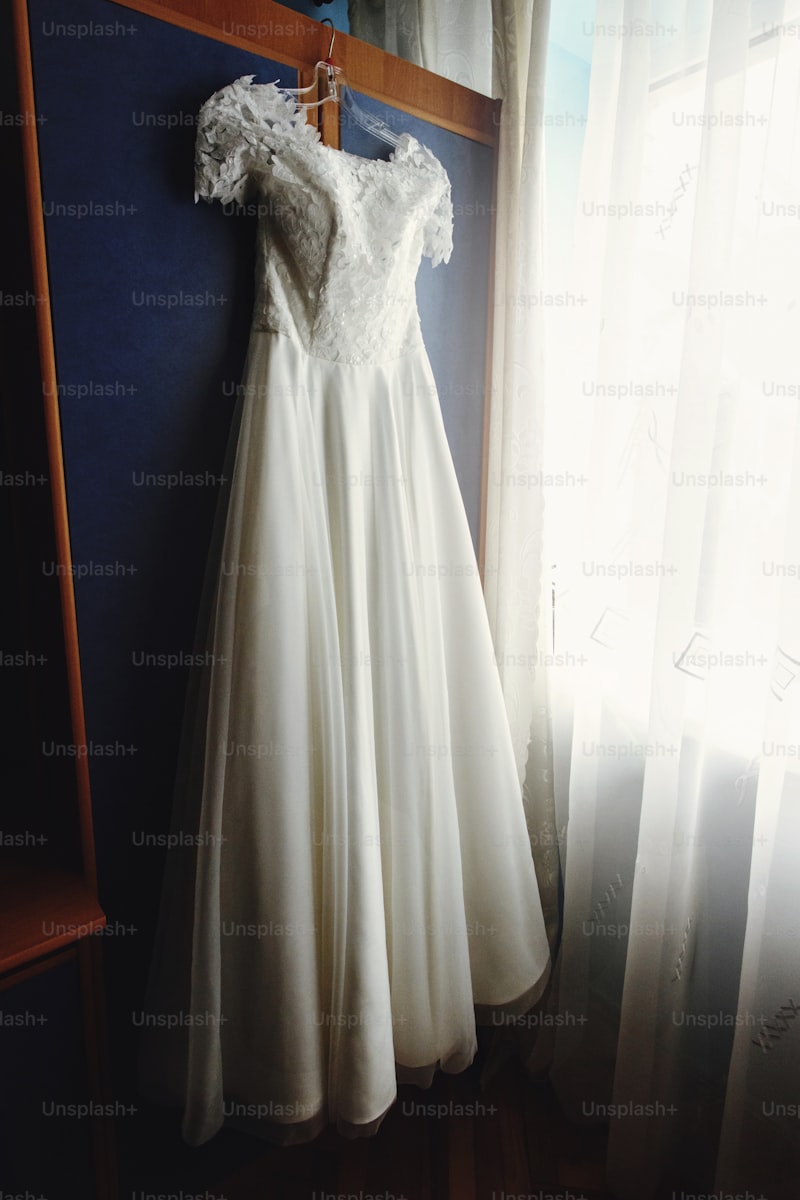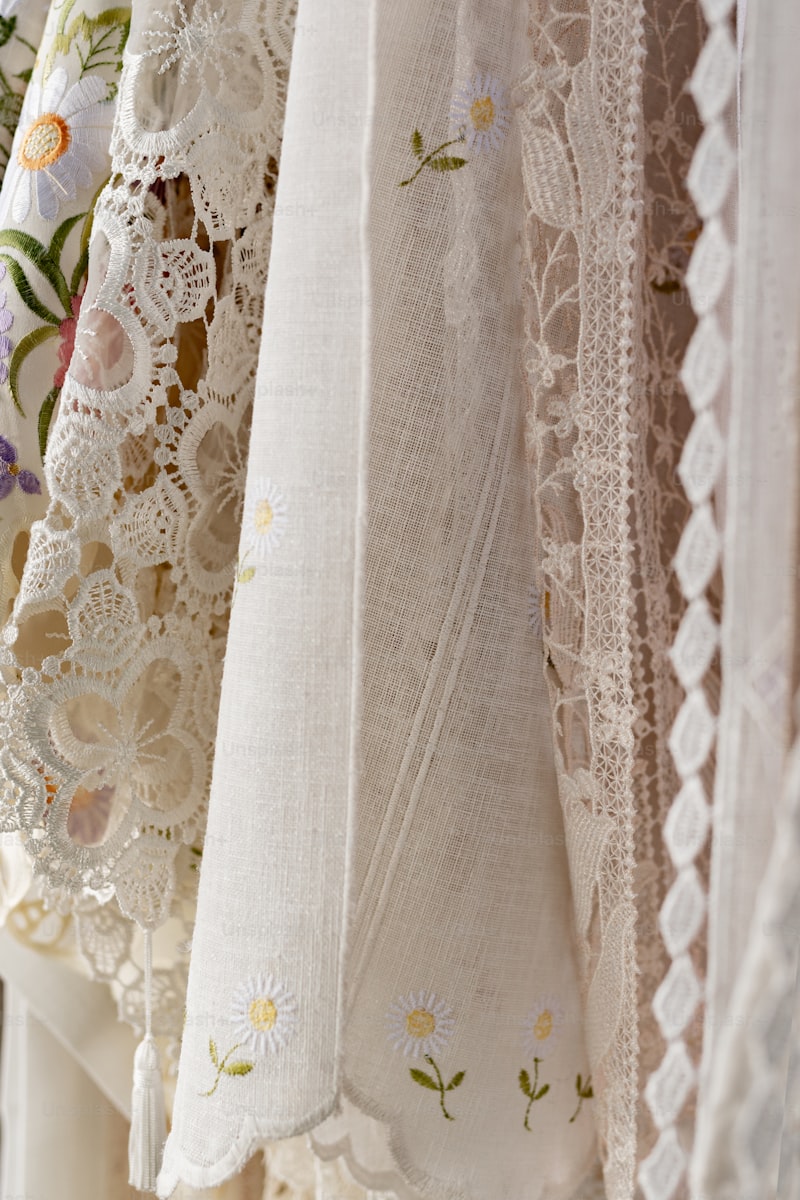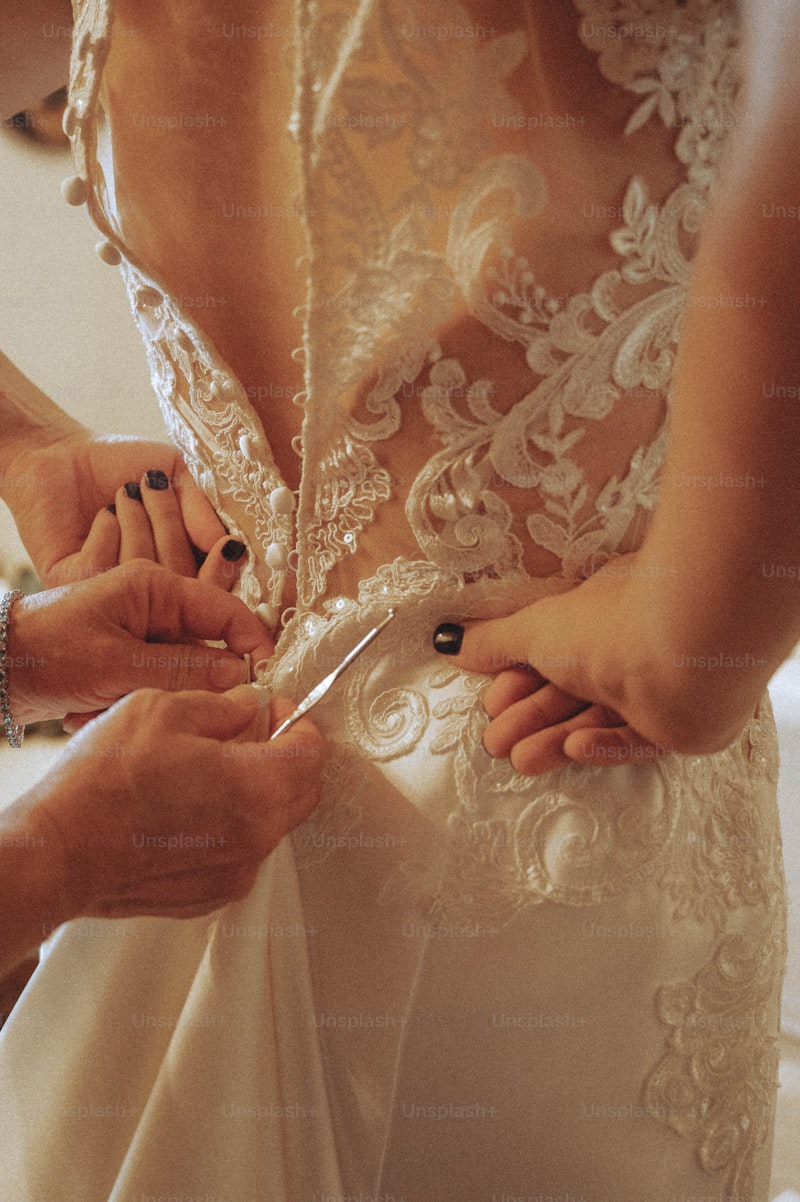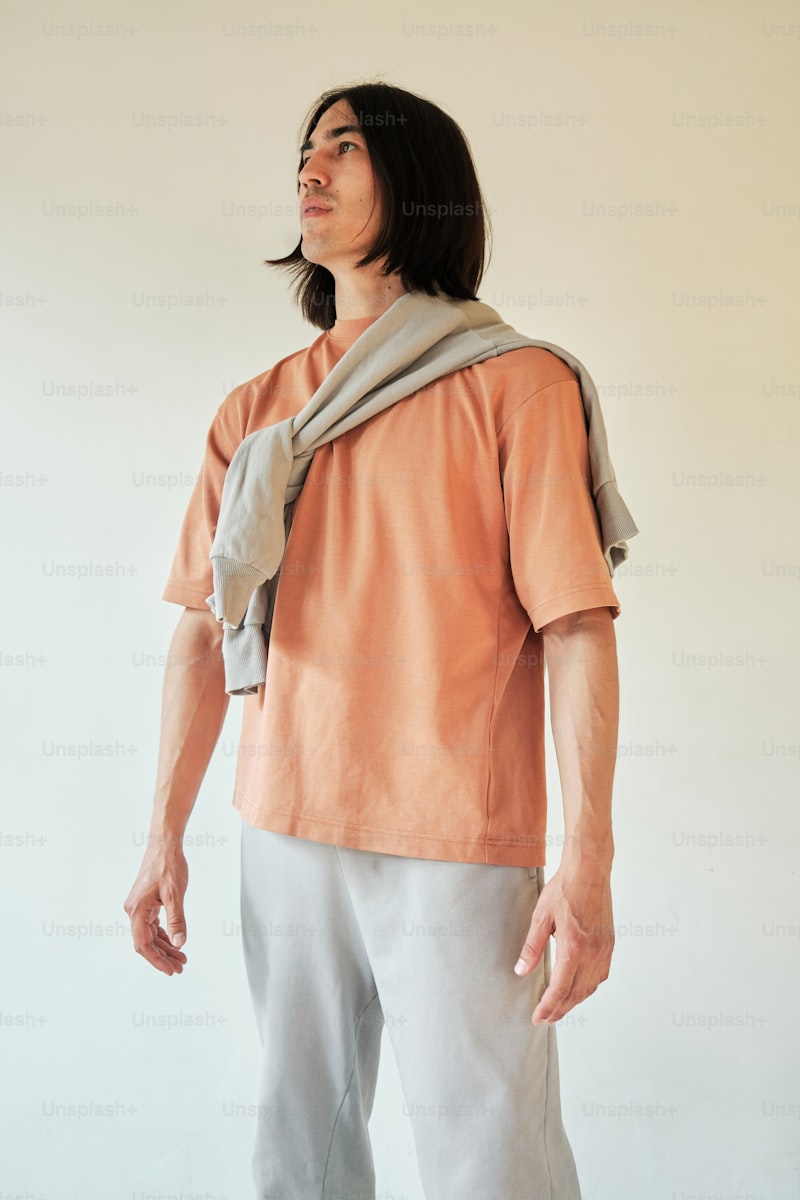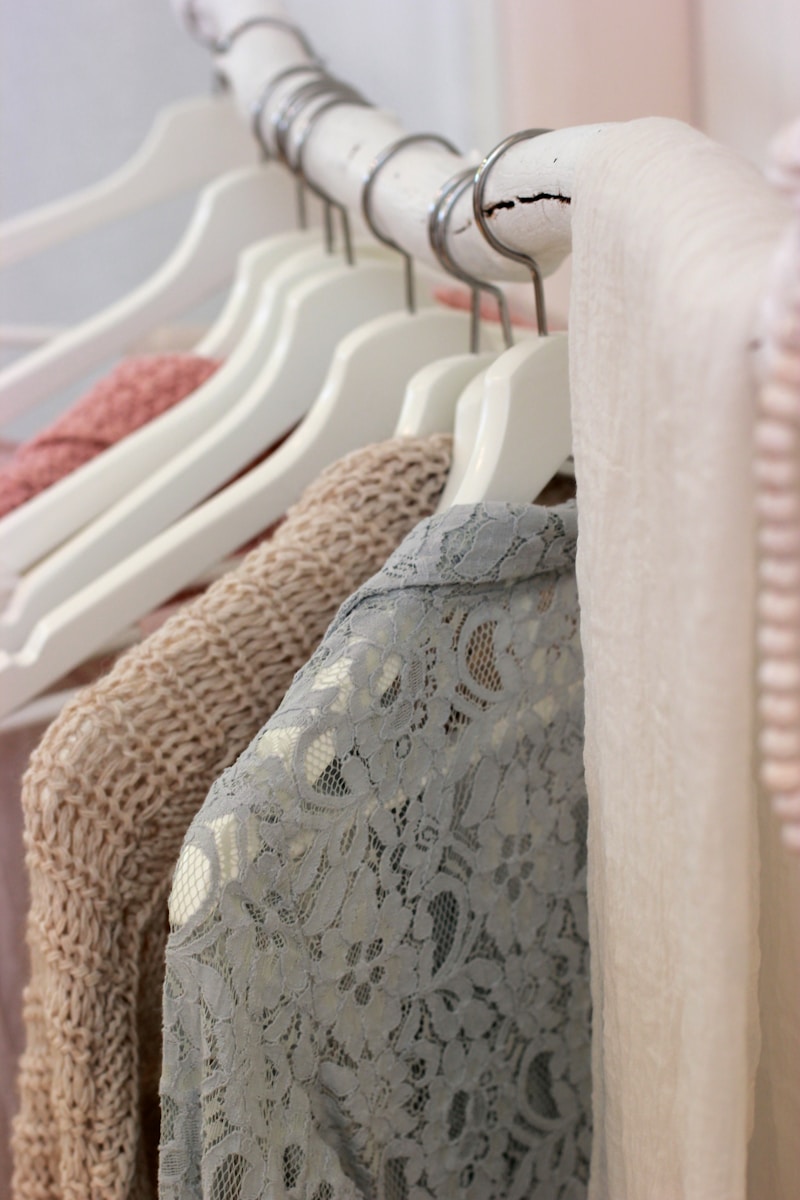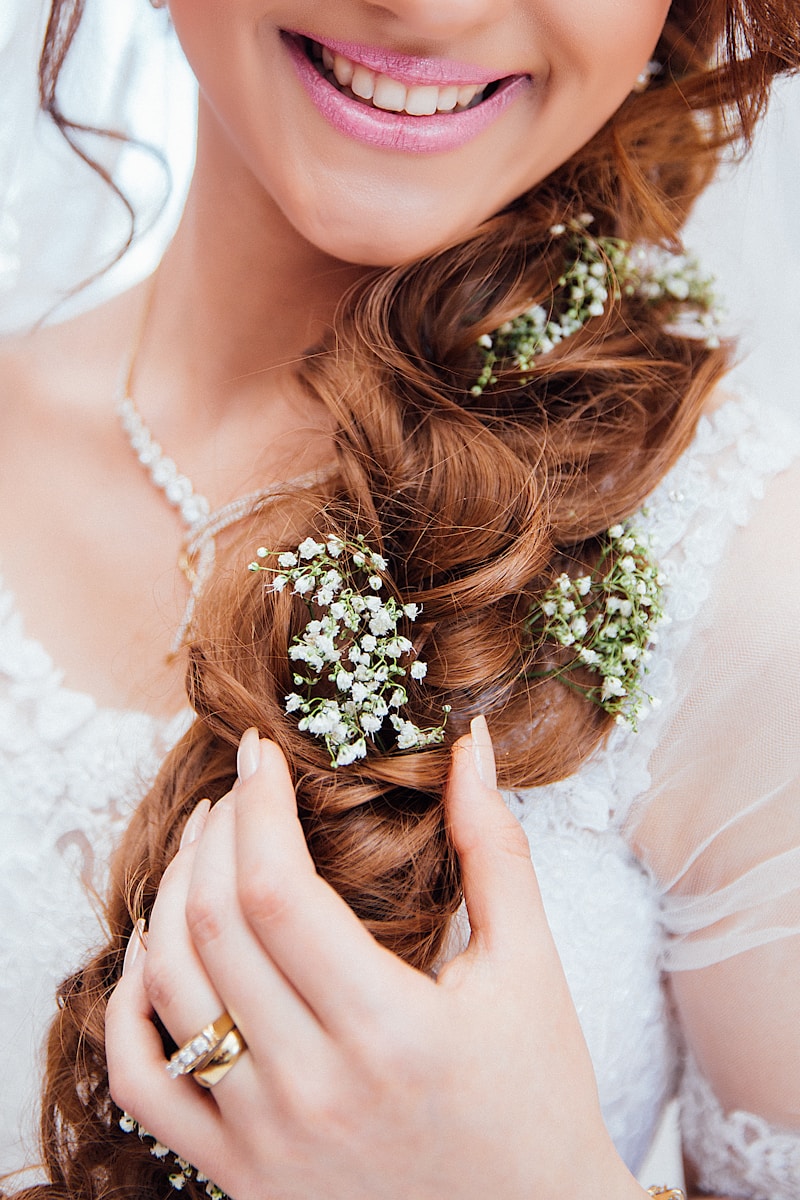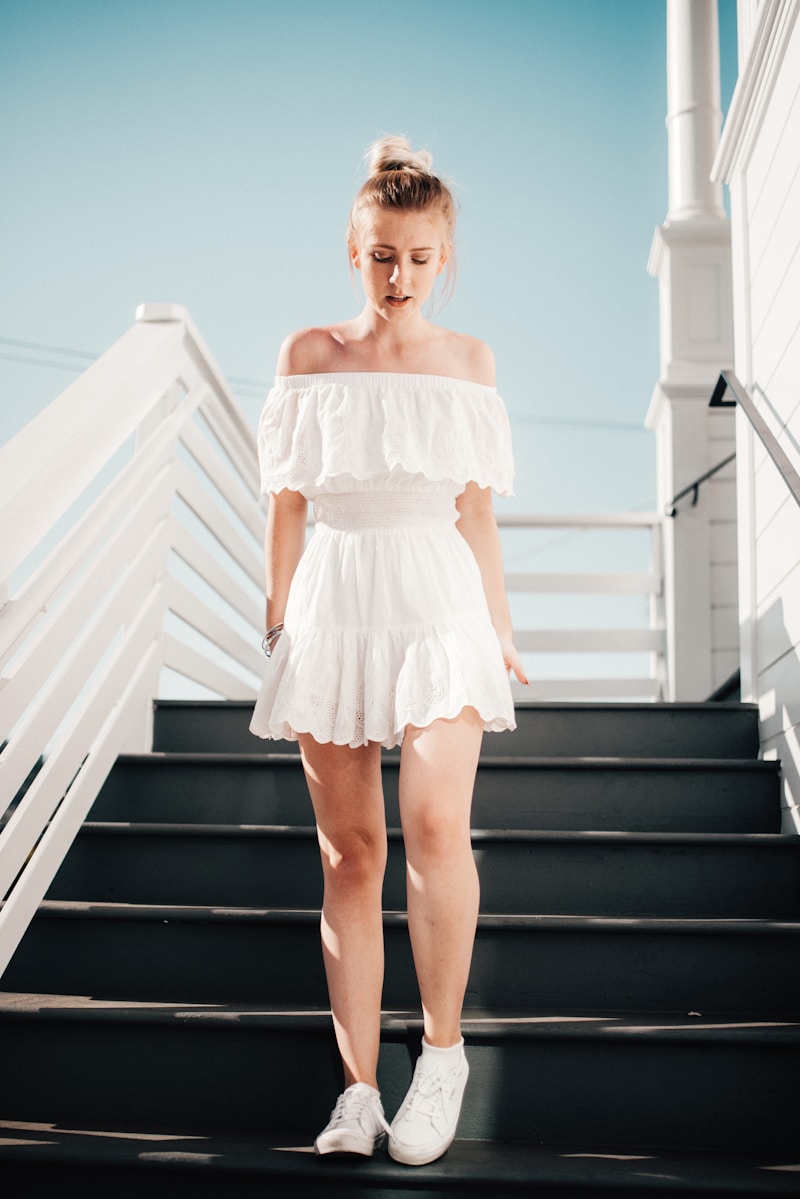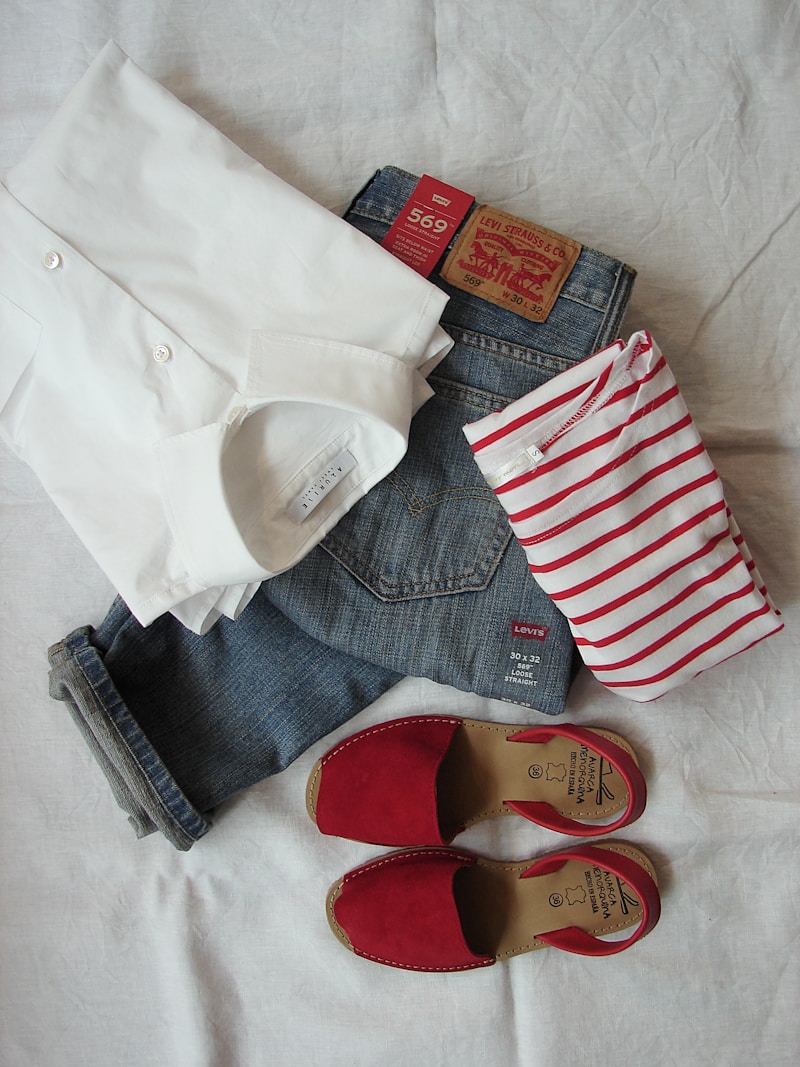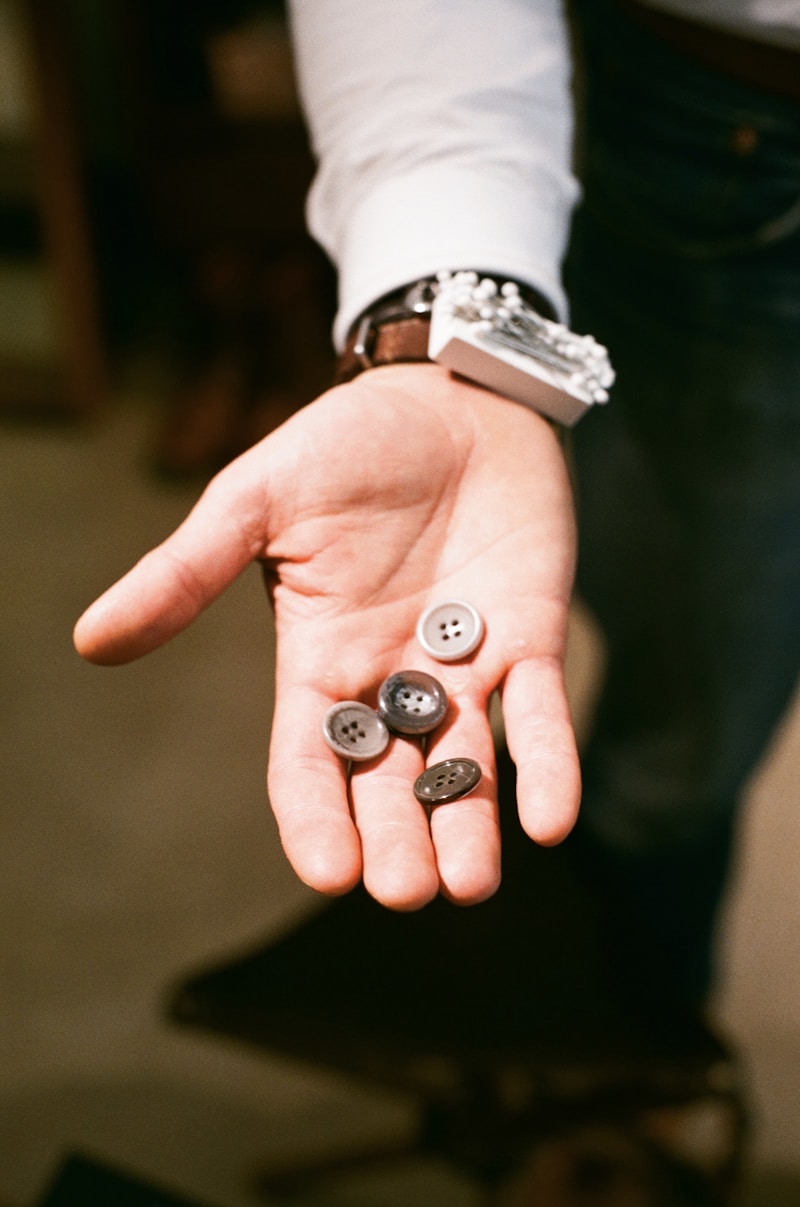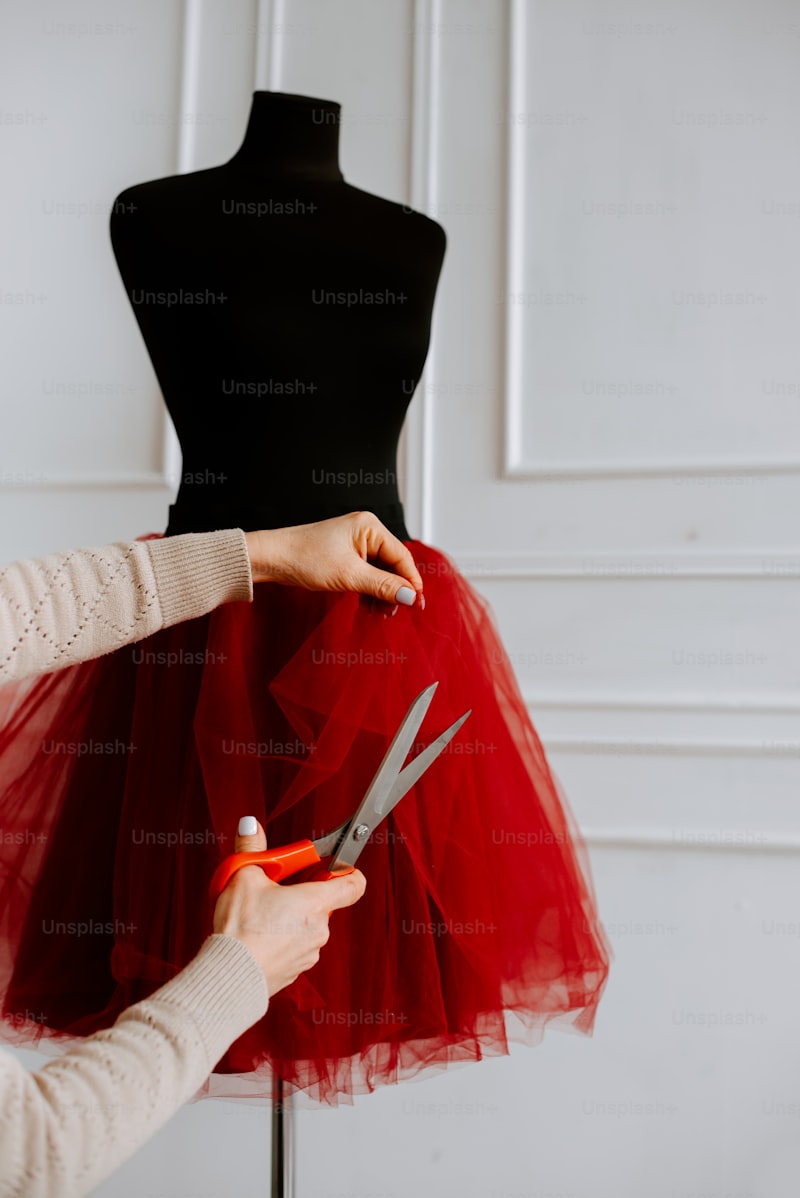Enhance Your Style: A Comprehensive Guide to Custom Embellishments During Dress Alterations
When it comes to dressing up for a special occasion, every detail counts. One of the most impactful ways to personalize your clothing is through custom embellishments during dress alterations. This guide will explore the world of dress alterations and the various embellishment options available to help you achieve your desired look.Understanding Dress AlterationsDress alterations are essential for ensuring that your outfit fits perfectly. This process may involve adjusting the hemline, taking in or letting out seams, or modifying the sleeves. However, alterations can go beyond mere adjustments; they can be an opportunity to express your personality through custom embellishments.What Are Custom Embellishments?Custom embellishments refer to decorative elements added to garments to enhance their visual appeal. These can include sequins, lace, embroidery, beading, and appliqués. The creativity involved in selecting and applying these features can elevate a simple dress into a stunning statement piece.Why You Should Consider Custom EmbellishmentsCustom embellishments can transform your dress in various ways. Here are some compelling reasons to consider them: Personalization: Custom embellishments provide a way to express your unique style. Creative Expression: You can add elements that reflect your personality, making your dress truly one-of-a-kind. Enhancing Visual Appeal: The right embellishments can make a dress look more luxurious and eye-catching. Covering Flaws: ...
Enhancing Silhouette Through Alterations: A Comprehensive Guide
When it comes to fashion, one of the most significant factors that influence how a garment looks on an individual is its silhouette. Enhancing silhouette through alterations can dramatically improve the way clothing fits and flatters your body shape. This article delves deep into the process of enhancing your silhouette, the types of alterations available, and useful tips to consider before proceeding with modifications to your favorite pieces.The Importance of Silhouette in FashionA silhouette refers to the outline or shape of an outfit, which can dramatically affect how the garment is perceived and how it fits the wearer. An enhanced silhouette not only boosts confidence but also emphasizes the best features while downplaying those you may not prefer. By coordinating colors, styles, and alterations, anyone can achieve a desirable silhouette that stands out.Types of Alterations to Enhance SilhouetteAlteration TypeDescriptionLetting OutThis process involves loosening seams to create a more relaxed fit, suitable for individuals who may have gained weight or prefer a more comfortable style.Taking InTaking in involves tightening seams, suitable for those who have lost weight or want a more tailored appearance.Hem AdjustmentsAltering the length of pants, skirts, or dresses can create a more flattering look, depending on the wearer's height and body proportions.Shoulder AdjustmentsAdjusting the shoulders can change how a garment drapes over the upper body, improving aesthetics and...
Understanding Bridal Gown Shape and Structure Changes: A Comprehensive Guide
Bridal gowns have undergone significant transformations over the years, mirroring the evolution of fashion trends, cultural influences, and individual preferences. With the growing popularity of bespoke fashion, brides today are keen to understand the nuances of bridal gown shape and structure changes. This article delves into the various aspects of how these changes occur, what influences them, and how brides can navigate their options effectively.The Evolution of Bridal Gown ShapesThe shape of bridal gowns has varied significantly across different eras. Let’s explore some key influences on these changes:EraBridal Gown ShapeInfluencesVictorian EraA-line and Ball GownsRomanticism and Royalty1920sStraight and Drop-WaistedFlapper Movement1950sFull Skirted GownsPost-War Optimism1990sMinimalist and SleekFashion Industry Simplification2020sHybrid and Custom DesignsDiversity and IndividualizationInfluential Designers and IconsThroughout history, numerous designers and influential figures have played a pivotal role in shaping bridal fashion. Designers like Vera Wang and Pronovias have introduced innovative features such as asymmetrical cuts and layered fabrics, which have greatly impacted the structure of bridal gowns. Celebrities such as Kate Middleton and Meghan Markle have also left their mark; their bridal styles have inspired countless brides worldwide, leading to an interested resurgence in traditional yet modern gown designs.Key Structural Changes in Bridal GownsThe structure...
Trending Design Adjustments for Wedding Dresses: A Comprehensive Guide for 2023
As we step into 2023, the world of wedding fashion is evolving rapidly, reflecting modern tastes and styles. The bridal gown is no longer just a dress; it's a statement piece that embodies the couple's unique love story. This year, trending design adjustments for wedding dresses have taken center stage, blending classic elegance with contemporary flair. In this article, we will explore the latest trends, innovative design adjustments, and tips on choosing the perfect wedding dress that aligns with your dream wedding.The Evolution of Wedding Dress TrendsTraditionally, wedding dresses have featured long trains, intricate lace, and voluminous silhouettes. However, in recent years, designers have embraced versatility and personalization, allowing brides to express their individuality through customized designs. This change has resulted in a rise in trending design adjustments that redefine what a wedding dress can be.1. Minimalist AestheticsThe minimalist trend continues to dominate wedding fashion in 2023. Clean lines, simple silhouettes, and understated elegance define these gowns. Minimalist dresses often feature:Sleek fabrics with a matte finishSubtle cutouts for a modern twistNeutral color palettes, focusing on whites, creams, and soft pastelsBrides opting for a minimalist dress can enhance their look with statement accessories, such as bold jewelry or oversized veils, creating a stunning contrast.2. Sustainable Fashion ChoicesWith increasing awareness of environmental issue...
Bridal Alteration FAQs: The Essential Guide for Every Bride
Planning a wedding involves a myriad of details, and one crucial aspect that often gets overlooked is bridal alterations. Alterations can significantly impact how a bride feels and looks on her special day. In this comprehensive guide, we will address the most frequently asked questions regarding bridal alterations, ensuring that every bride is well-informed and prepared. From understanding the alteration process to finding the right tailor, we’ve got you covered.1. What Are Bridal Alterations?Bridal alterations refer to the adjustments made to a wedding dress to ensure a perfect fit for the bride. This can include tweaking the length, taking in or letting out seams, and adding or removing elements such as sleeves or train. Each dress is unique, and so are the needs for alterations.2. Why Are Bridal Alterations Important?Wearing a wedding dress that fits perfectly is essential for comfort and confidence on the big day. A well-fitted gown allows for ease of movement and can enhance the bride's natural beauty. Proper alterations can also prevent wardrobe malfunctions, enabling the bride to fully enjoy her celebration without worrying about her dress.3. When Should I Start the Alteration Process?Start the alteration process as early as possible, ideally four to six months before your wedding date. This timeline allows for any adjustments that may be necessary after initial fittings. Dresses may require multiple fittings to achieve the desired fit, so planning ahead is crucial.Re...
Ultimate Guide to Special Occasion Dress Modifications
Transforming Your Special Occasion Dress: The Complete Guide to ModificationsSpecial occasions call for remarkable dresses that not only reflect your style but also fit impeccably. Whether it’s a wedding, gala, or a formal event, the right modifications can enhance your overall look, ensuring that your dress is a perfect fit for the occasion. In this article, we will explore various special occasion dress modifications, their benefits, and how you can achieve the perfect fit tailored just for you.Understanding Special Occasion Dress ModificationsDress modifications refer to the alterations made to clothing to improve fit or style. For special occasions, these modifications can be crucial. Many individuals find that dresses off the rack do not fit their unique body shapes perfectly. This is where skilled dressmakers come into play, offering services tailored to your needs. Below are some common modifications that you may consider:Modification TypeDescriptionHemline AdjustmentAltering the length of the dress for a better fit.Taking In/Letting OutAdjusting the sides of the dress for a snugger or looser fit.Adding Bust CupsInserting cups to enhance contour and support.Changing NecklineAdjusting the neckline style to suit personal preference.Resizing SleevesAltering sleeve length or fullness for comfort and style.Why Consider Modifications?Modifications can significantly elevate your confidence and comfort levels during special events. Here are a few reasons why you should conside...
Adapting Vintage Wedding Gowns: A Modern Touch to Timeless Elegance
Weddings are one of the most cherished milestones in a person's life, and finding the perfect gown is often a moment filled with emotion and excitement. In recent years, there has been a growing trend toward adapting vintage wedding gowns, allowing brides to embrace the beauty of the past while making it uniquely their own. This article will delve into the intricacies of vintage wedding gowns, how they can be adapted for today's brides, and share tips and suggestions to ensure that your vintage gown is perfectly suited to your style and vision.The Allure of Vintage Wedding GownsVintage wedding gowns carry a unique charm and character that can be hard to replicate in modern designs. These gowns often reflect the fashion and sentiments of their respective eras, showcasing exquisite craftsmanship and intricate details. Whether it's the dramatic silhouette of a 1950s ball gown or the flapper-inspired shifts of the 1920s, vintage gowns provide a rich tapestry from which brides can draw inspiration.Understanding the Different StylesBefore diving into the adaptation process, it is essential to understand the various styles of vintage wedding gowns. Each era has its signature characteristics, influencing fabric choices, cuts, and embellishments. Here are some common styles:EraStyle CharacteristicsPopular Fabrics1920sDrop waist, fringe embellishments, loose fitSilk, chiffon, lace1950sFull skirts, cinched waists, tea-lengthOrganza, taffeta, satin1970sBohemian styles, flowing silhouette...
Modernizing Classic Wedding Dress Styles: A Perfect Blend of Tradition and Trend
Introduction to Modernizing Classic Wedding Dress StylesWeddings are timeless celebrations that often weave together tradition, culture, and personal touch. One of the most significant aspects of any wedding is the wedding dress. While many brides choose to embrace classic styles, a growing trend has emerged: modernizing classic wedding dress styles. In this article, we will explore how contemporary brides can revamp traditional silhouettes to create stunning, memorable looks for their big day.The Allure of Classic Wedding Dress StylesClassic wedding dress styles have enduring appeal for a reason. They evoke a sense of nostalgia, elegance, and timeless beauty. Styles such as the A-line, ball gown, and sheath dress have adorned brides for decades, and they continue to inspire modern designers. However, the modern bride often seeks to infuse her personality and current trends into her wedding attire.Understanding the Modern Bridal MarketThe bridal market has evolved significantly, reflecting changes in societal norms and style preferences. Today’s brides prioritize individuality, comfort, and versatility in their choices. They are less bound by traditional rules and more inclined towards creating a unique statement. This shift has led to the innovative modernization of classic wedding dress styles.Key Elements in Modernizing Classic Wedding Dress StylesThere are several approaches to modernizing classic wedding dress styles. Here are some popular techniques:ElementDescriptionFa...
Color Adjustments in Wedding Dress Designs: A Comprehensive Guide
Understanding Color Adjustments in Wedding Dress DesignsWeddings are incredibly special occasions where every detail matters, especially the wedding dress. When it comes to wedding dress designs, one of the most significant aspects that can enhance the overall look is the choice and adjustment of colors. In this article, we will explore how color adjustments in wedding dress designs can impact not just the aesthetic appeal, but also the emotional resonance of the attire. We will cover various aspects, including popular color choices, techniques for making color adjustments, and how these adjustments align with the latest wedding trends.The Importance of Color in Wedding DressesColor plays a crucial role in wedding dress designs. It not only reflects a bride's personal style but also conveys emotions and themes of the wedding. Traditionally, white has been the color of choice for brides in many cultures, symbolizing purity and simplicity. However, as modern weddings evolve, so too does the palette of available colors. Today, brides can choose from an array of shades, from soft pastels to bold, vibrant colors.Popular Color Choices for Wedding DressesWhen it comes to choosing the color of a wedding dress, the options are virtually limitless. Here are some popular choices: Classic White: The traditional choice remains ever-popular, representing elegance and timelessness. Ivory: A softer alternative to white that adds warmth. Blush Pink: A romantic and whimsical color tha...
Essential Tips for Communicating with Your Seamstress
Why Effective Communication is KeyWhen it comes to custom tailoring or alterations, effective communication with your seamstress is crucial. A well-fitted garment can dramatically enhance your appearance, so understanding how to convey your needs and preferences accurately is essential. Whether you’re getting a wedding dress tailored or having your favorite suit adjusted, the following tips will help ensure a smooth and successful collaboration with your seamstress.1. Be Prepared with Clear IdeasBefore your first meeting with a seamstress, it’s essential to have a clear idea of what you want. Gather inspiration by collecting pictures from fashion magazines, websites, or even social media platforms like Pinterest. Bring these visuals with you to help articulate your style and preferences.Use Visual Aids to Convey Your VisionHaving a visual reference greatly aids in communication. Showing a picture of the style you want can eliminate any guesswork for your seamstress. If you’re altering a specific garment, bring it with you, along with any accessories or shoes you plan to wear. This way, your seamstress can understand the complete look you’re going for.2. Discuss Fabric ChoicesAnother important aspect to discuss with your seamstress is fabric selection. Different fabrics behave differently, affecting the overall outcome of your garment. Make sure to express your preferences regarding fabric type, texture, and weight. If you’re unsure, don’t hesitate to ask for recommendations f...
The Journey of a Tailored Wedding Dress: Crafting Your Dream Gown
Every bride dreams of a perfect wedding dress that reflects her unique personality and style. Among the various options available, none resonate more deeply than a tailored wedding dress. This article explores the intricate journey of creating a custom bridal gown, detailing each step from initial concept to final fitting. So, if you’re considering a bespoke gown for your special day, read on to discover what to expect during this transformative experience.Understanding Tailored Wedding DressesA tailored wedding dress is designed specifically for the bride, ensuring a perfect fit and the opportunity to incorporate personal touches. Unlike off-the-rack options, tailored dresses allow for customization in fabric, style, and detailing.Benefits of Choosing a Tailored Wedding DressTailored wedding dresses come with numerous advantages. Here are some that stand out:AdvantageDescriptionPerfect FitCustom measurements ensure that the dress fits like a glove.Unique DesignCreate a one-of-a-kind gown that reflects your personality.Quality FabricChoose premium materials that resonate with your aesthetic.Attention to DetailEvery element, from stitching to embellishments, is tailored to your specifications.The Process of Crafting a Tailored Wedding DressThe journey of a tailored wedding dress involves several well-defined stages. Here’s an overview of each step:1. Initial ConsultationThe journey begins with an initial consultation with your chosen designer or tailor. This meeting is crucial...
The Art of Wedding Gown Adjustments: Perfecting Your Dream Dress
Understanding the Importance of Wedding Gown AdjustmentsWeddings are one of the most significant occasions in a person’s life, and every detail counts, especially the wedding gown. The right adjustments can make a world of difference in achieving the perfect fit. In this article, we will explore the art of wedding gown adjustments and why it is crucial for brides to embrace this transformative process.Why Are Adjustments Necessary?Wedding gowns come in various styles, materials, and sizes, but the reality is that very few brides find the perfect dress straight off the rack. Most gowns require some degree of alteration to ensure they fit the bride's unique body shape and personal style. Here are a few reasons why adjustments are essential: Fit: A perfect-fitting gown enhances your natural beauty and boosts your confidence on your big day. Comfort: Proper adjustments ensure the gown is comfortable to wear for an extended period. Style: Tailoring can help accentuate certain features, thus aligning the gown with the bride’s vision. Fabric Handling: Each fabric behaves differently; adjustments can help accommodate the unique characteristics of the material.Types of Wedding Gown AdjustmentsAdjustments can vary based on the gown design and the specific needs of the bride. Here are some common types of adjustments:Adjustment TypeDescriptionHem LengthAdjusting the length of the gown to ensure it is the perfect fit for your height.Bust AdjustmentMaking alterations to the bu...
Mastering the Art of Adapting Sleeves and Necklines for Every Body Type
Introduction to Adapting Sleeves and NecklinesIn the world of fashion, understanding the importance of adapting sleeves and necklines is crucial for creating pieces that flatter various body types. Whether you are a designer, a seamstress, or simply someone interested in customizing your wardrobe, mastering these techniques can elevate your clothing game. This article delves into the different styles of sleeves and necklines, methods to adapt them, and tips to ensure you achieve a perfect fit.Why Adapt Your Sleeves and Necklines?Fashion is not a one-size-fits-all industry. Every individual possesses unique characteristics, and adapting sleeves and necklines allows for personalization that enhances comfort and style. Here are some reasons why it's essential to customize these elements: Enhancement of Body Shape: Different shapes can be accentuated or softened by the choice of sleeve and neckline. Comfort: Some individuals may find traditional cuts restrictive; alterations can lead to a more relaxed fit. Fashion Trends: Adapting allows you to stay on-trend while still enjoying classic pieces.Types of Sleeves and NecklinesUnderstanding the different types of sleeves and necklines is the first step in adapting them effectively. Below is a brief overview of popular types:Popular Sleeve Styles Sleeve Type Description Cap Sleeves Short sleeves that cover the shoulder, ideal for summer outfits. Bishop Sleeves Full sleeves gathered at the wrist, offering a s...
Final Fitting Essential Checklist: Your Comprehensive Guide to a Perfect Fit
When it comes to tailoring, achieving the perfect fit is crucial. Whether you are preparing for a wedding, prom, or any special event, the final fitting is a decisive moment in your garment journey. This final fitting essential checklist will help you ensure that nothing is overlooked, giving you peace of mind and a flawless look. Below, we’ll explore the necessary steps and tips to make your final fitting a success.Understanding the Final FittingThe final fitting is typically scheduled after all major alterations have been made. It serves as the last chance to check the fit, make adjustments, and confirm that your garment looks just as you envision. It’s essential to arrive prepared. Here’s an in-depth checklist to consider:Checklist ItemDescription1. Schedule in AdvanceEnsure that you have a specific time booked for your final fitting to avoid last-minute rushes.2. Bring Your ShoesYour choice of footwear significantly affects the fit of your garment. Bring along the shoes you plan to wear.3. Wear Appropriate UndergarmentsConsider the undergarments you will wear on the actual day. These will affect how your garment sits against your body.4. Check in with Your TailorCommunicate any additional concerns or preferences to your tailor during the fitting.5. Inspect All SeamsLook closely at the stitching and seams to ensure they are neat and secure.6. Examine LengthsCheck the length of the dress, pants, or sleeves. A good fit should enhance your silhouette.7. Move AroundWalk, sit, ...
Enhancing Your Bridal Gown Longevity Post-Alteration: Tips and Care
Understanding the Importance of Post-Alteration Care for Your Bridal GownBridal gowns are more than just garments; they are treasured pieces of art, embodying memories of one of the most significant days in a couple's life. However, after alterations are made to ensure a perfect fit, it becomes crucial to maintain the integrity and beauty of the gown. This article explores the vital steps you can take to enhance your bridal gown's longevity post-alteration, ensuring that it remains a cherished part of your wedding memories for years to come.Why Consider Alterations?Before diving into care tips, it's essential to understand why alterations are often necessary. Many brides purchase their gowns off the rack, and these dresses may not fit perfectly due to various body shapes and sizes. Expert alterations allow for adjustments that enhance comfort and appearance. Even though alterations can make your gown more suiting, they can potentially compromise the fabric's integrity if not cared for properly afterward.Key Factors Affecting Longevity Post-AlterationWhen considering the longevity of your bridal gown after alterations, several factors come into play: Fabric: The type of fabric significantly impacts care methods. Alteration Type: Hemming, taking in, and adding embellishments all require different care approaches. Storage Conditions: How you store your gown post-alteration can determine its lifespan.Steps to Enhance Longevity of Your Bridal Gown1. Immediate Post-Alteration Ca...
Bridal Alterations for Postpartum Brides: A Comprehensive Guide
Planning a wedding is a momentous occasion, but for postpartum brides, the journey can take on additional layers of complexity. The right wedding dress can make a world of difference, especially after childbirth. In this article, we will delve into the nuances of bridal alterations specifically tailored for postpartum brides, helping you navigate this unique experience with confidence. Understanding Postpartum Changes After giving birth, a woman's body undergoes significant changes. Hormonal fluctuations, weight changes, and physical recovery can all affect body shape and size. It’s essential to have a garment that accommodates these transitions. Here are some key postpartum changes to consider: Change Description Weight Fluctuation Women can experience weight loss or gain in the months following childbirth. Breast Size Changes Many women notice changes in breast size and shape, especially if breastfeeding. Body Shape Alterations The waist, hips, and even the stomach area may shift, requiring adjustments to the dress cut. Skin Changes Stretch marks and skin elasticity can become a consideration during fitting. Choosing the Perfect Dress When selecting a wedding dress, postpartum brides should keep comfort and adaptability in mind. Here are some styles that generally work well: A-Line Dresses: These styles are flattering and provide room to accommodate body changes without sacrificing elegance. Empire Waist Dresses: This design gathe...
What to Expect During the Alteration Process: A Comprehensive Guide
Understanding the Alteration ProcessThe alteration process is an essential aspect of tailoring and customizing clothing to achieve the perfect fit. Whether you're preparing for a special event, updating your wardrobe, or creating a personalized outfit, knowing what to expect during this process can significantly enhance your experience. In this article, we will delve into the key steps, considerations, and tips for navigating the alteration process.Why Alterations MatterAlterations are not just about making clothes fit better; they are about enhancing your overall appearance and boosting your confidence. When clothes fit well, they not only look more flattering but also feel more comfortable. Many people may wonder what alterations can be done. Here’s a brief overview:Common AlterationsDescriptionHemmingShortening or lengthening pants, skirts, or dresses.Waist AdjustmentTaking in or letting out the waist of garments for a perfect fit.Sleeve Length AdjustmentAltering the length of sleeves on jackets, shirts, or dresses.Strap AdjustmentsLengthening or shortening straps on dresses or tops for added comfort.Letting Out SeamsMaking garments larger without changing their style.Steps Involved in the Alteration ProcessWhen you bring a garment to a tailor or alteration specialist, the process typically involves several key steps:1. Initial ConsultationThe first step of the alteration process is the initial consultation. During this meeting, the tailor examines the garment and discusse...
Keeping Alterations Budget-Friendly: Smart Tips and Tricks
In today's world, where fashion trends change in the blink of an eye, many individuals find themselves with a closet full of clothes that are either out of style or no longer fit properly. This often leads to the need for alterations to refresh or customize these garments. However, keeping alterations budget-friendly can be a challenge. In this article, we will explore effective strategies to manage your alteration costs without compromising on style or quality.Understanding the Costs of AlterationsAlterations can range from simple adjustments, such as hemming pants, to more complex changes, like resizing dresses. Understanding the various factors that impact the cost of alterations is essential for maintaining a budget. Here are some pricing guidelines:Type of AlterationAverage CostPant Hemming$10 - $20Waist Adjustment (Pants)$10 - $30Dress Shortening$15 - $50Taking In or Letting Out$20 - $60Jacket Sleeve Adjustment$20 - $401. Assess Your Clothing NeedsThe first step in keeping alterations budget-friendly is to assess your clothing needs carefully. Before deciding to alter an item, ask yourself the following questions:Is this piece of clothing versatile enough to wear in different settings?Do I love this item enough to spend money on alterations?Will I wear this item frequently after alterations?By evaluating your wardrobe's functionality, you can avoid unnecessary alterations on pieces you rarely wear.2. DIY AlterationsOne of the best ways to keep alteration costs low is to...
Exploring the Emotional Aspects of Gown Modifications: A Journey of Personal Expression
The journey of modifying a gown transcends mere fabric alteration; it delves deep into the emotional realm of personal expression, identity, and memory. Gown modifications can resonate with individuals on multiple levels, reflecting their unique stories and transformations, thus making the process far more significant than mere aesthetics. This article explores the emotional aspects of gown modifications, providing insights into how these changes impact perception and identity. Understanding Gown Modifications When it comes to gown modifications, the term encompasses a variety of alterations that one may undertake, including adjustments to fit, design changes, and the addition of personal details that reflect an individual’s journey. Whether it’s for a wedding, prom night, or another significant event, modifying a gown is often imbued with personal significance. The Emotional Connection to Gown Modifications The act of modifying a gown is deeply personal and often signifies a remarkable transformation in one’s life. It can represent: Milestones: Weddings, graduations, and anniversaries are moments when gown modifications hold special meaning. They serve as reminders of significant life events that deserve celebration. Identity: Personalizing a gown to fit one's self-image and style can be an empowering experience. It allows individuals to express their uniqueness and embrace their true selves. Memories: Incorporating elements from past experiences (such as reusing ...
Enhancing Alterations: The Creative Use of Accessories
Introduction to Enhancing Alterations with AccessoriesIn the world of fashion, alterations are essential for achieving the perfect fit. While tailoring can drastically improve the silhouette of an outfit, there's an often-overlooked aspect that can take alterations to the next level: accessories. By using accessories to enhance alterations, you can transform a simple outfit into a statement ensemble. This article explores various ways to incorporate accessories effectively, elevating your style and personal flair.Understanding the Role of AccessoriesAccessories are the finishing touches that can make or break an outfit. They serve multiple purposes: adding color, texture, and personality, and even redirecting attention away from areas that may not be as flattering. By understanding how to use accessories wisely, you can significantly enhance the impact of alterations made to any garment.Types of Accessories That Make a DifferenceAccessory TypePurposeExamplesJewelryAdds sparkle and draws attention to the faceEarrings, necklaces, braceletsBagsOffers functionality and styleClutch, crossbody, toteShoesCompletes the look and influences overall vibeHeels, flats, bootsBeltDefines the waist and adds visual interestLeather, fabric, statementHatsOffers style while providing sun protectionFedora, beanie, sun hatScarvesAdds color, warmth, and versatilityPashmina, silk, infinityThe Benefits of Using AccessoriesUsing accessories to enhance alterations offers numerous advantages. Firstly, t...

